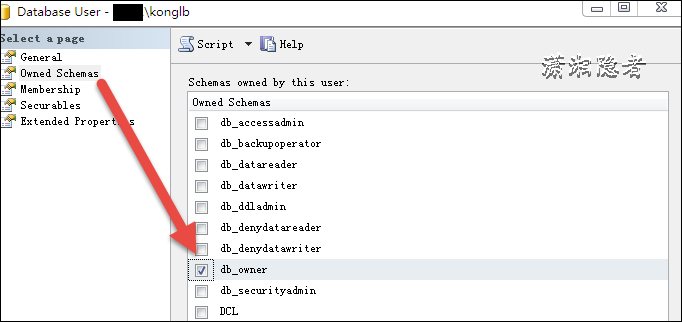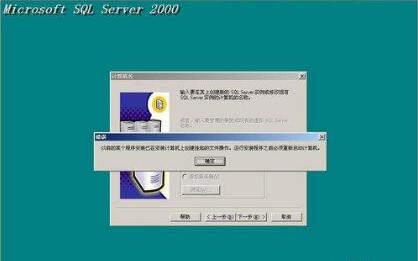文章主要給大家介紹了關(guān)于SQL Server基礎(chǔ)之行數(shù)據(jù)轉(zhuǎn)換為列數(shù)據(jù)的相關(guān)資料,文中通過示例代碼介紹的非常詳細(xì),對大家學(xué)習(xí)或者使用SQL Server具有一定的參考學(xué)習(xí)價值,需要的朋友們下面來一起學(xué)習(xí)學(xué)習(xí)吧
準(zhǔn)備工作
創(chuàng)建表
use [test1]
go
create table [dbo].[student](
[id] [int] identity(1,1) not null,
[name] [nvarchar](50) null,
[project] [nvarchar](50) null,
[score] [int] null,
constraint [pk_student] primary key clustered
(
[id] asc
)with (pad_index = off, statistics_norecompute = off, ignore_dup_key = off, allow_row_locks = on, allow_page_locks = on) on [primary]
) on [primary]
go
插入數(shù)據(jù)
insert into test1.dbo.student(name,project,score)
values('張三','android','60'),
('張三','iOS','70'),
('張三','html5','55'),
('張三','.net','100'),
('李四','android','60'),
('李四','ios','75'),
('李四','html5','90'),
('李四','.net','100');
使用Case When和聚合函數(shù)進(jìn)行行專列
語法
select column_name,
<aggregation function>(<case when expression>)
from database.schema.table
group by column_name
語法解析
column_name
數(shù)據(jù)列列名
aggregation function
聚合函數(shù),常見的有:sum,max,min,avg,count等。
case when expression
case when表達(dá)式
示例
select name,
max(case project when 'android' then score end) as '安卓',
max(case project when 'ios' then score end) as '蘋果',
max(case project when 'html5' then score end) as 'html5',
max(case project when '.net' then score end) as '.net'
from [test1].[dbo].[student]
group by name
示例結(jié)果
轉(zhuǎn)換前
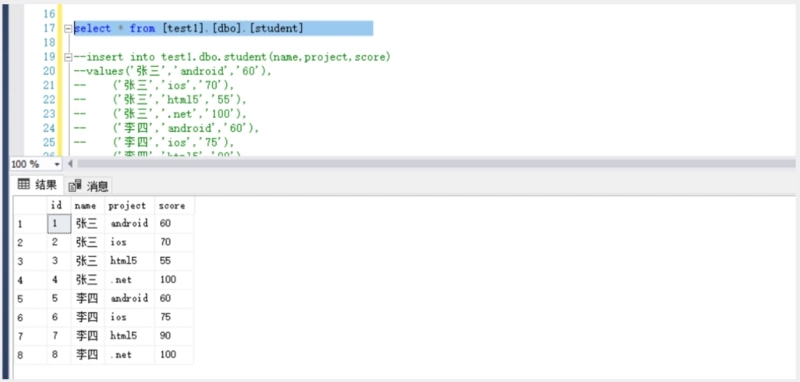
轉(zhuǎn)換后
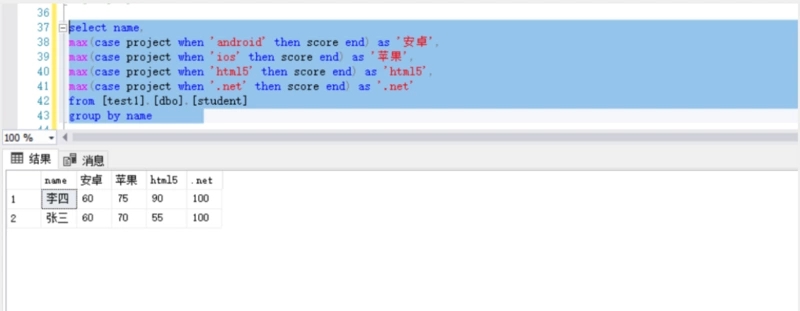
使用PIVOT進(jìn)行行專列
PIVOT通過將表達(dá)式中一列中的唯一值轉(zhuǎn)換為輸出中的多個列來旋轉(zhuǎn)表值表達(dá)式。并PIVOT在最終輸出中需要的任何剩余列值上運(yùn)行聚合,PIVOT提供比一系列復(fù)雜的SELECT...CASE語句指定的語法更為簡單和可讀的語法,PIVOT執(zhí)行聚合并將可能的多行合并到輸出中的單個行中。
語法
select <non-pivoted column>,
[first pivoted column] as <column name>,
[second pivoted column] as <column name>,
...
[last pivoted column] as <column name>
from
(<select query that produces the data>)
as <alias for the source query>
pivot
(
<aggregation function>(<column being aggregated>)
for
[<column that contains the values that will become column headers>]
in ( [first pivoted column], [second pivoted column],
... [last pivoted column])
) as <alias for the pivot table>
<optional order by clause>;
語法解析
<non-pivoted column>
非聚合列。
[first pivoted column]
第一列列名。
[second pivoted column]
第二列列名。
[last pivoted column]
最后一列列名。
<select query that produces the data>
數(shù)據(jù)子表。
<alias for the source query>
表別名。
<aggregation function>
聚合函數(shù)。
<column being aggregated>
聚合函數(shù)列,用于輸出值列,最終輸出中返回的列(稱為分組列)將對其進(jìn)行分組。
[<column that contains the values that will become column headers>]
轉(zhuǎn)換列,此列返回的唯一值將成為最終結(jié)果集中的字段。
[first pivoted column], [second pivoted column], ... [last pivoted column]
數(shù)據(jù)行中每一行行要轉(zhuǎn)換的列名。
<optional order by clause>
排序規(guī)則。
示例
select b.Name,b.[android],b.[ios],b.[html5],b.[.net]
from
(select Name,Project,Score from [test1].[dbo].[student])
as a
pivot
(
max(Score)
for Project in ([android],[ios],[html5],[.net])
)
as b
order by b.name desc
示例結(jié)果
轉(zhuǎn)換前
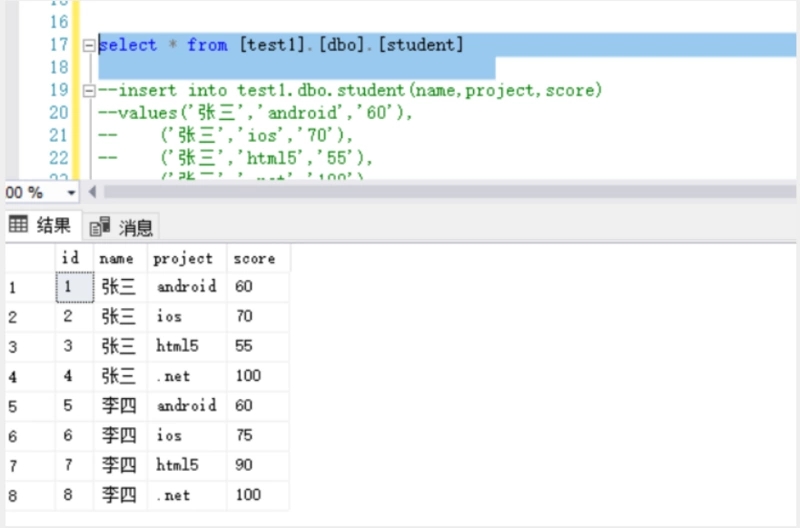
轉(zhuǎn)換后

注意事項
1、如果輸出列名不能在表轉(zhuǎn)換列中,則不會執(zhí)行任何計算。
2、輸出的所有列的列名的數(shù)據(jù)類型必須一致。
總結(jié)
以上就是這篇文章的全部內(nèi)容了,希望本文的內(nèi)容對大家的學(xué)習(xí)或者工作具有一定的參考學(xué)習(xí)價值。
- SQL server數(shù)據(jù)庫創(chuàng)建代碼 filegroup文件組修改的示例
- SQLServer數(shù)據(jù)庫處于恢復(fù)掛起狀態(tài)的解決辦法
- SQL Server數(shù)據(jù)庫之datepart和datediff應(yīng)用查找當(dāng)天上
- SQL Server數(shù)據(jù)庫中的數(shù)據(jù)類型隱式轉(zhuǎn)換問題
- Thinkphp5框架實(shí)現(xiàn)獲取數(shù)據(jù)庫數(shù)據(jù)到視圖的方法
- Linux下使用ps命令來查看oracle數(shù)據(jù)庫相關(guān)進(jìn)程的操作
- 如何使用Access數(shù)據(jù)庫創(chuàng)建一個簡單MIS管理系統(tǒng)
- Access數(shù)據(jù)庫日常維護(hù)和Access數(shù)據(jù)庫優(yōu)化方法
- MariaDB數(shù)據(jù)庫的外鍵約束實(shí)例代碼介紹詳解
- Windows10系統(tǒng)下MariaDB數(shù)據(jù)庫安裝教程圖解


